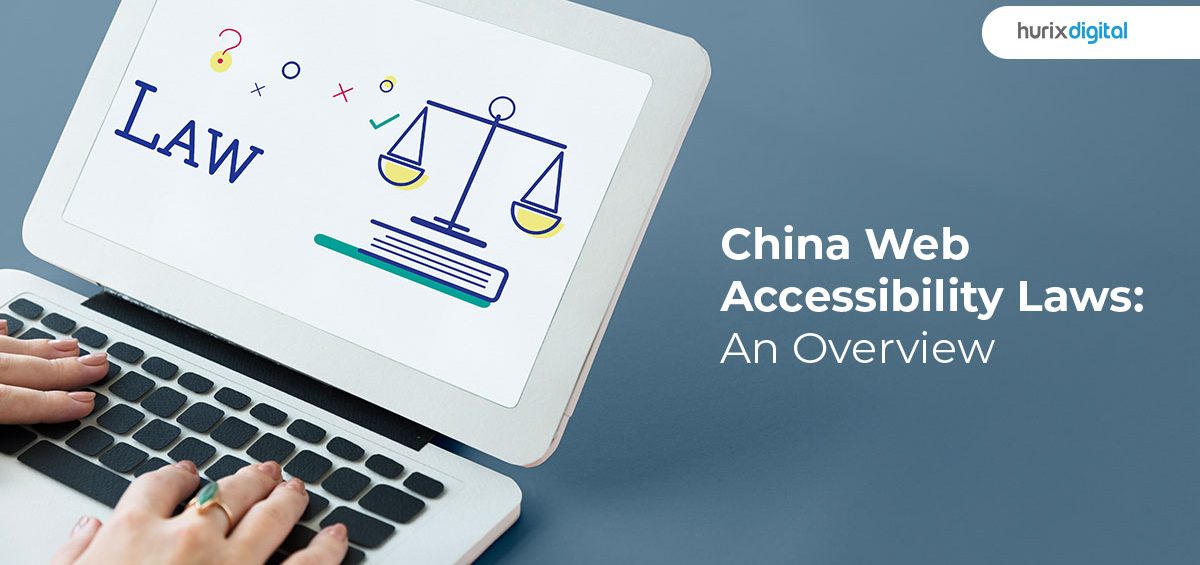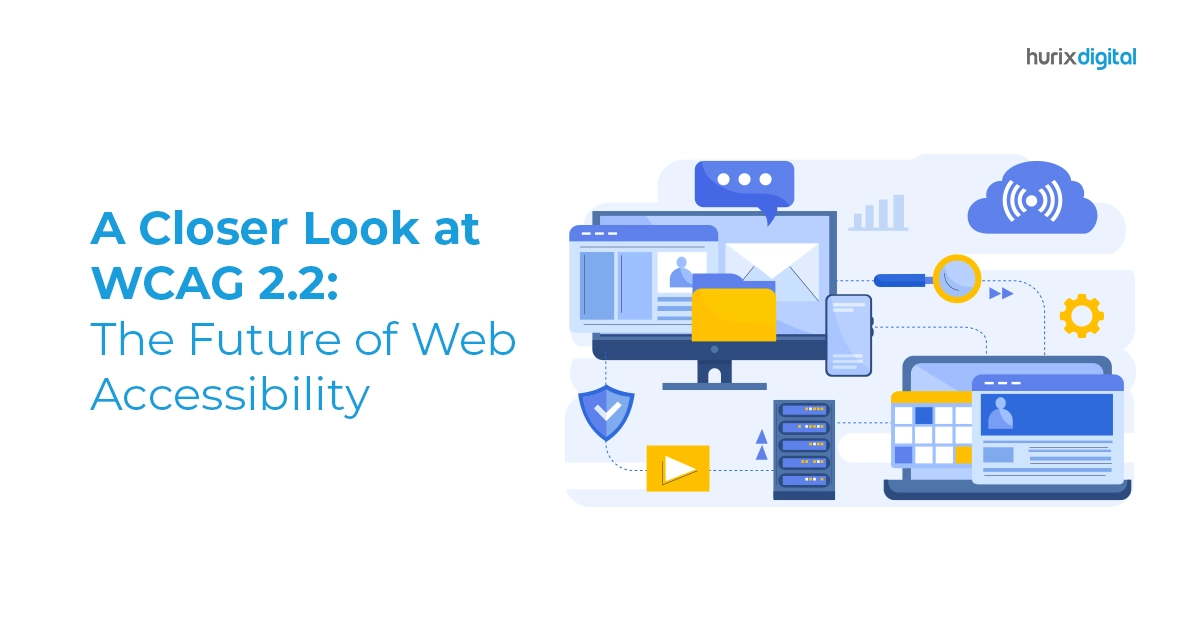Summary
This article provides an overview of China's Voluntary Web Accessibility Standard, which was passed in 2008. The standards are an essential measure to ensure that people with disabilities can access all the services and information digital tools and technologies provide.
Accessibility laws play a significant role in ensuring everyone is treated equally regardless of physical, cognitive, sensory, or technological limitations. Approximately 1 in 6 people globally experience some kind of disability. Consequently, each country follows various accessibility laws to safeguard equal rights and opportunities for people with disabilities.
There are numerous accessibility laws around the world, like Disability Discrimination Ordinance (DDO) by Hong Kong, Disability Discrimination Act (DDA) by Australia, Barrier Free Information and Communication Standard by Canada, Equality Act 2010 by the United Kingdom, etc.
Similarly, China also passed a landmark law on the Protection of Persons with Disabilities in 1990. However, when the law was passed, technological advancement and digital tools were not present. As a result, the law did not take into consideration the importance of an individual’s equal access to a country’s digital landscape.
As a result, China then published Voluntary Web Accessibility Standard in 2008. These comprehensively curated standards are based on the WCAG guidelines. The standards allow differently-abled individuals to access all the services and information digital tools and technologies provide.
If you want to know more about China’s web accessibility standards, keep reading further.
Table of Contents:
- What is China’s Voluntary Web Accessibility Standard of 2008?
- Who Has To Follow China’s Voluntary Web Accessibility Standard of 2008?
- Key Guidelines of China’s Voluntary Web Accessibility Standard of 2008?
- Wrapping Up
What is China’s Voluntary Web Accessibility Standard of 2008?
China’s Voluntary Web Accessibility Standard was passed in 2008 as an essential measure toward ensuring digital accessibility to people with disabilities.
The guidelines were officially titled “Information Technology – Web Content Accessibility Guidelines (WCAG) – Part 2: Chinese National Standard – Web Content Accessibility Guidelines for Chinese Government Websites.”
The digital accessibility policy guidelines were carefully curated by the China National Institute of Standardization (CNIS) under the supervision of the Ministry of Industry and Information Technology (MIIT).
Additionally, the accessibility guidelines were also based on the Web Content Accessibility Guidelines (WCAG) 1.0 developed by the Web Accessibility Initiative (WAI) of the World Wide Web Consortium (W3C).
Who Has to Follow China’s Voluntary Web Accessibility Standard of 2008?
The Voluntary Web Accessibility Standards were implemented, keeping in mind the Chinese government websites. The guidelines encouraged governmental web platforms to follow web accessibility standards for the convenient use of people with disabilities.
Since 2008, a wide range of digital apparatuses have been introduced in the digital landscape since then. As a result, the standards have evolved to become more inclusive and comprehensive.
It is important to note that these web accessibility standards are voluntary in China. Web platforms are not legally mandated to follow the guidelines and face no legal consequences because of non-compliance.
However, the government strives to encourage all private and governmental web platforms to adhere to the website accessibility standards.
Also Read: The Importance of Web Accessibility and How Hurix is Making a Difference
Key Guidelines of China’s Voluntary Web Accessibility Standard of 2008?
The WCAG guidelines mention three levels of conformity, namely, Level A, Level AA, and Level AAA. Level A is the most basic level of web conformity and looks into addressing the most basic web barriers for differently-abled individuals.
Level AA covers a broader range of accessibility barriers and provides a more inclusive user experience. The last level, AAA, is the most strict and highest level of accessibility providing the users with a fully inclusive experience.
To successfully meet the guidelines of China’s Voluntary Web Accessibility Standard, the web platforms must aim for WCAG accessibility level AA. Some more key guidelines of the accessibility standard are:
1. Text Alternatives (Guideline 1.1)
All non-text content, like images, videos, infographics, graphs, audio, etc., should be paired with text alternatives. This allows individuals with auditory and visual disabilities to perceive and understand the provided information.
2. Distinguishable Content (Guideline 1.4)
Users with low vision or other visual impairments find it difficult to distinguish between the text and the background if they are of similar colors.
Consequently, the distinguishable content guidelines ensure that the text and the background are of contrasting colors. This improves the visibility and functionality of the information for the user.
3. Keyboard Accessibility (Guideline 2.1)
Each functionality of the web platform should be accessible not only through the mouse but the keyboard also.
This ensures that users with motor disabilities can navigate and interact with the content effectively without any hassle and delays.
4. Seizures And Physical Reactions (Guideline 2.3)
This guideline ensures that web platforms do not display anything with constant flickering or quick flashing that could trigger seizures or physical discomfort.
For users with neurological problems, web content shouldn’t put them under excessive stress or trigger bodily reactions.
5. Input Assistance (3.3)
The input assistance guidelines make it easier for differently abled users to fill out forms quickly and efficiently without making any errors.
The platform must provide clear instructions, suggestions, and prompts to facilitate the form-filling process. The user should also be given enough time to interact with the form and proceed accordingly.
6. Evolving Compatibility (4.1)
This is a very important guideline as it ensures that each web platform should be built in a way that remains operational and usable as the technology evolves.
For instance, without relevant web accessibility standards, disabled users might find it difficult to gauge new technological tools like artificial intelligence, virtual reality, machine learning, etc. Consequently, the content should be compatible with various technologies and trends.
Also Read: The Ultimate Guide to WCAG Compliance for the Website Developers
Wrapping Up
As digital technology is evolving at a rapid pace, the government of China is striving to adapt web accessibility laws more rigorously. To know more about the China web accessibility standard, you can read about WCAG.
Additionally, you can also read about a11y accessibility to understand web accessibility in more depth. Web a11y collective does not only focus on website accessibility but also on making computer systems accessible.
If you want to adopt web accessibility solutions for your website, you can reach out to us at Hurix Digital. We can take care of all your accessibility and assistive technological needs to provide an inclusive experience to your users. Some of our trusted clients globally are Ikea, Cambridge University Press, Deloitte, Cathay Pacific, etc. You can be our next client.
Reach out to our expert team now and get started. Hope to see you soon!









